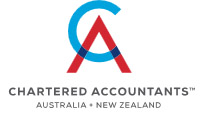Small business must race to beat instant asset write-off deadline

.
Brisbane-based Belinda Crowley said the deadline would catch many SMEs unawares and after 30 June they would need to depreciate any asset over $1,000.
For businesses with a turnover above $10 million, the threshold is $100.
“This is a significant burden of time and money, especially for small businesses,” Ms Crowley said. “Even if their accountants handle it for them, it’s still an additional expense.”
The instant asset write-off (IAW) for small business has been part of the landscape since 2015.
During the pandemic, the government introduced temporary full expensing as part of its support package for all businesses regardless of size.
Now both these popular initiatives, which encouraged owners to invest in their businesses, are coming to an end.
“Historically, business tax depreciation was cumbersome for smaller enterprises to administer,” she said.
“As a compliance initiative IAW has saved business owners significant dollars because depreciation became less complex to administer.
“Many business owners hoped these initiatives would be rolled forward but the new federal government has different priorities.”
One of the biggest issues was the massive difference between accounting for the occasional big-ticket item of say, $30,000, and doing the same for any asset over $1,000 (or $100 for larger businesses).
Ms Crowley said SMEs which did not need to write off assets this financial year should save the depreciation for when it was essential.
“It all depends on business results. If you’re going through a tough period right now and don’t need the deduction to reduce your tax bill, think really hard and seek professional advice on whether you should be taking it now,” she said.
“It’s also important to note that supply chain issues mean even if you wanted to access the instant asset write-off, you must ensure the asset is installed and ready for use by 30 June 2023 or you can’t claim it.
“This is certainly an issue in an environment in which some cars, and large farm machinery, are taking six months to arrive.
“You need to be confident the asset will definitely be on farm or on site and in use by June 30.”
Sectors that relied on physical assets, such as the agricultural, mining and construction industries, would be most heavily impacted.
Ms Crowley said initiatives such as the skills and training boost and technology investment boost had been announced, but these were unlikely to have the cut-through as the instant asset write-off.
“The federal budget highlighted environment, digitisation and training as priorities, so SMEs should be aware of the new 20 per cent uplift deduction and take advantage of it if they can.
“This means businesses spending, for example, $100 to train an employee, or on digitisation, will get a $120 deduction, with this incentive backdated to March 29, 2022.
“The problem is this is very specific and only for training conducted with registered training organisations, so it is a much harder benefit for small to medium businesses to access.
She said access to the write-offs would be limited to businesses with aggregated turnover below $50 million and the training boost expires on 30 June 2024 while the technology scheme lasts only until the end of this financial year.
“It will also be inconsistently beneficial across sectors – for example, a lot of learning in the ag sector is on the job rather than sending employees on courses for a formal accredited structure.”
Philip King
09 March 2023
accountantsdaily.com.au

